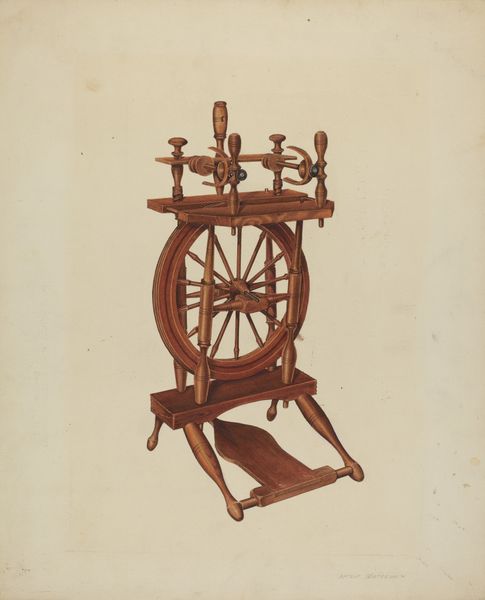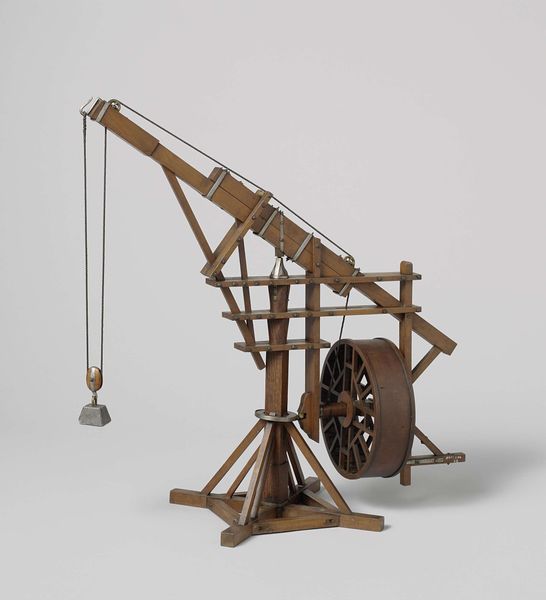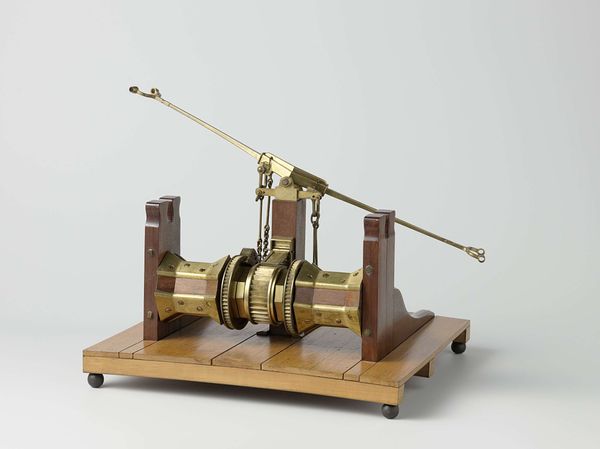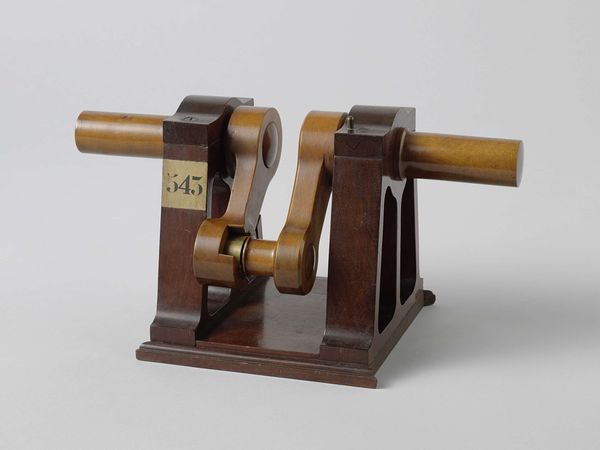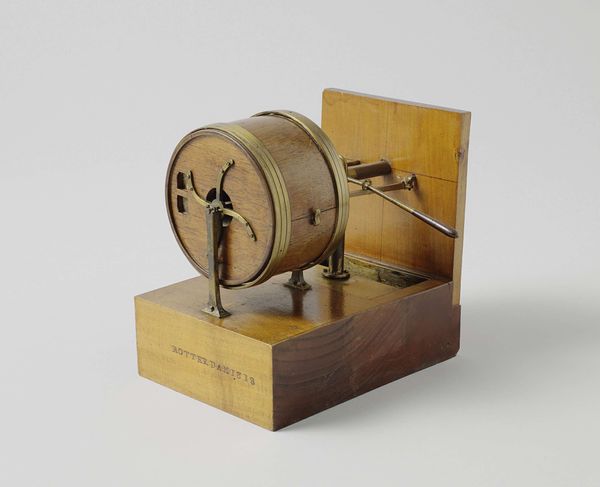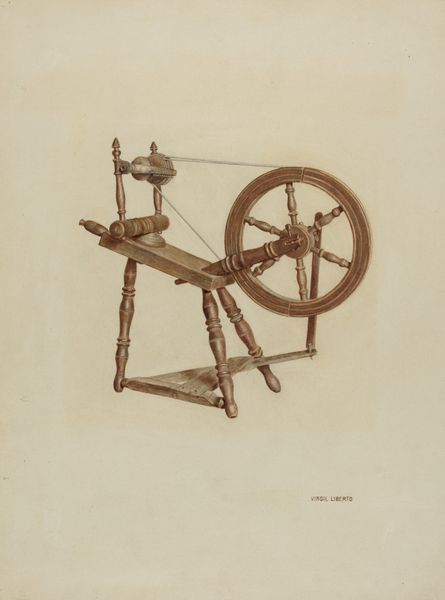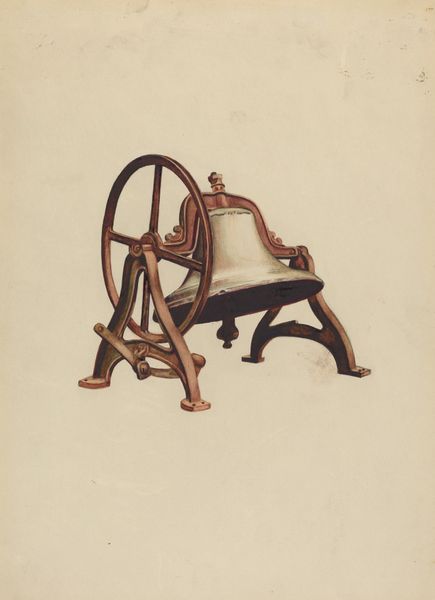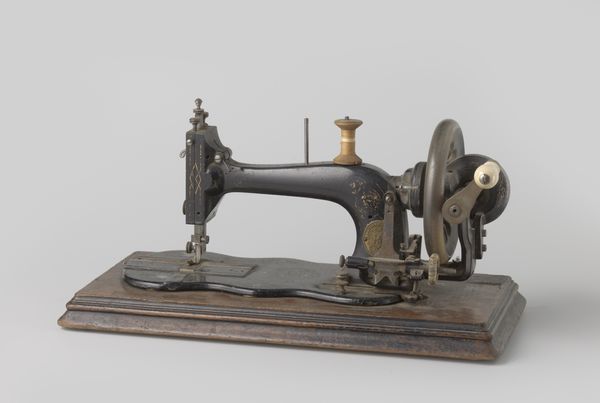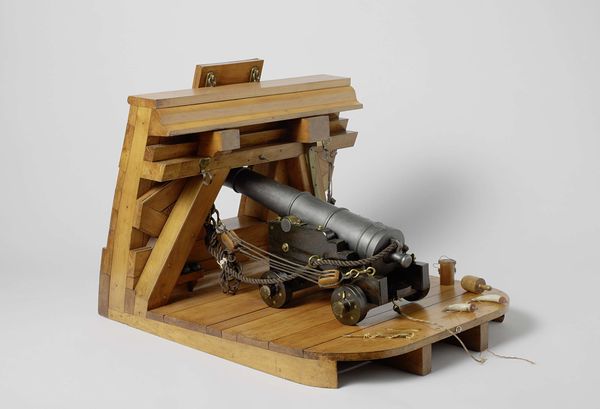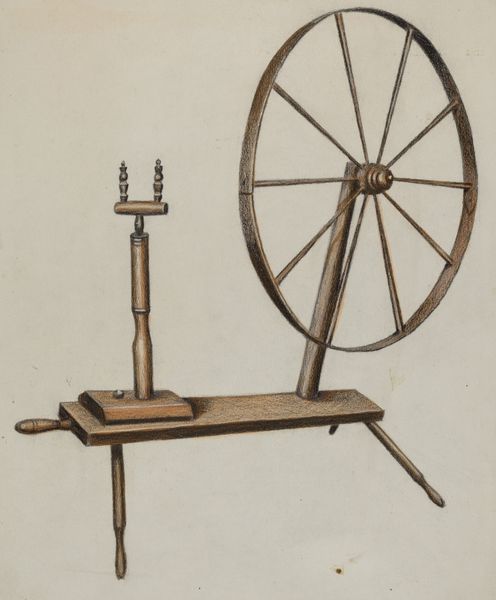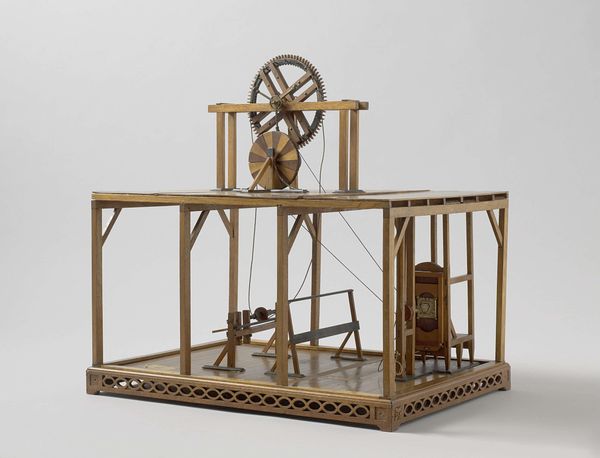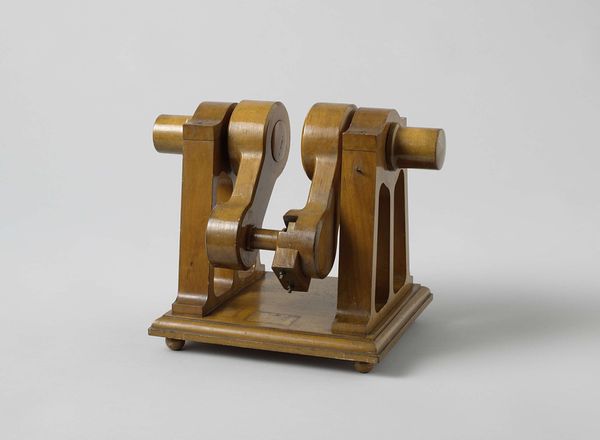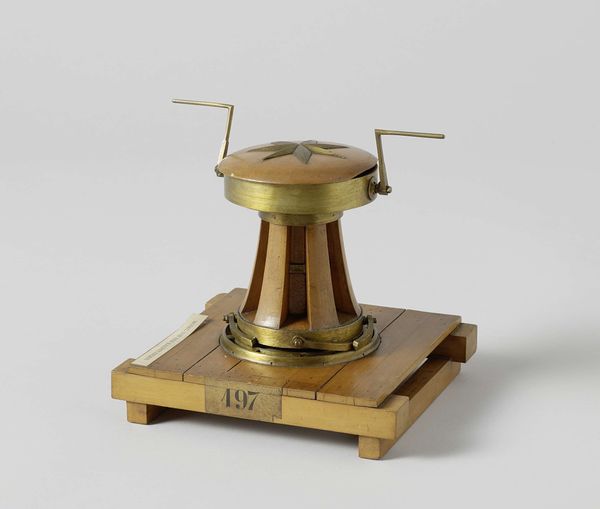
sculpture, wood
#
geometric
#
sculpture
#
wood
Dimensions: height 24.5 cm, width 20.8 cm, depth 12.4 cm
Copyright: Rijks Museum: Open Domain
Curator: Isn’t she lovely? This wooden sculpture, circa 1835, presents a Model of a Paddle Wheel. A beautiful anonymous work, meticulously crafted, don't you think? What strikes you first? Editor: It feels incredibly poised, despite being static. The way the light catches the different levels of the wooden wheels gives it this impression of gentle movement. It makes me think about labour. The constant churning and what that implied for working class people who kept paddle wheels like these turning. Curator: Labor, yes, but also progress! There's something profoundly hopeful in these circles and lines. This idea that through design and engineering, we can navigate, traverse…transform the very course of things, literally. Editor: Transform for whom? It is impossible to look at inventions from this time without acknowledging how colonialist endeavors were further entrenched through innovations like paddle wheels, contributing to exploitation. Curator: A fair point. Though, perhaps the sheer artistry also acknowledges a deep-seated impulse to create order? Look at the almost obsessive attention to geometric detail; how the wheel’s paddles are so strategically placed for perfect balance and efficiency. It is quite beautiful to behold. Editor: Beauty is a complicated term. What one finds beautiful, others may find alienating or triggering. However, the act of creation itself...there is potential to find beauty and resistance, even in things we do not necessarily condone, especially those tools and machinations tied to colonialism and capitalism. Curator: Yes, that potential. This little sculpture has opened a whirlpool of ideas. What was first perceived as merely a beautiful thing, a curiosity from another age, has come to encompass themes of industry, artistry, labor, exploitation, innovation, and colonialism. Not bad for a miniature paddle wheel model, wouldn’t you say? Editor: Exactly. It's a potent reminder to look beyond the surface and to acknowledge the interconnected histories that works like this carry. Let's keep these complex dialogues afloat.
Comments
No comments
Be the first to comment and join the conversation on the ultimate creative platform.
